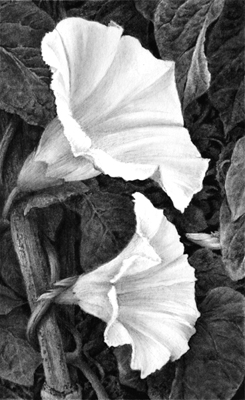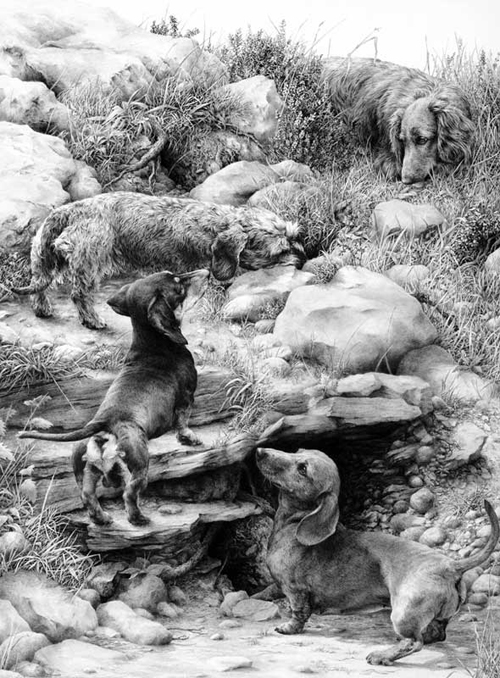I sometimes answer drawing-related questions on Quora. This is my latest post in answer to the query “DO I NEED TO DRAW FROM LIFE IN ORDER TO GET BETTER AT DRAWING?”
I’ll assume by “draw” you mean the use of graphite pencil, and that the drawing includes both line and three-dimensional shading. A realistic, or semi-realistic, end result being your goal.
Because the pencil is a relatively narrow, pointed stylus, we tend to be detail-orientated artists. We don’t have the facility to lay down broad areas with a quick gesture, so spontaneous “suggestion” is rare. Instead, we concentrate on the finer details.
To do that you need to know what the details are. You cannot successfully draw something you don’t understand. That understanding, and the knowledge of the detail, comes from observation. You store individual elements in your brain and subconsciously retrieve them as you work. Drawing from life is an excellent way to load data into your brain, because it forces you to focus on the make-up of your subject. And the more data you store, the easier drawing becomes.
You can gain similar information from photos too, or just by looking at something in real life. But the act of drawing reinforces the memory of its parts.
You can test your ability to recall quite easily. And this exercise is a good one to run through before you draw anything. Use words, not drawing – describe the object to yourself. Take a leaf: you know its shape but is it flat? Or does its surface consist of rounded and raised islands? Are the intervening veins lighter or darker than the body? Do the veins sink in to the upper surface or stand proud of it? How does the underneath surface differ from the top? Drawing from life helps to answer those questions, and commits the results to memory. The next time you draw a leaf, you’ll have all the information you need to draw it confidently and realistically.
Sometimes when I’m drawing foliage I find my store becomes depleted. No problem. I grab a sketchbook, walk to the nearest leafy lane (which I fortunately live on) and sketch individual leaves. Now, armed with an array of different shapes and forms, I can inject a greater sense of reality into my drawing.
Photos are good sources of detail, but they won’t supply much three-dimensional information.
Pure observation will help to analyse textures, form, and detail, but the memories might fade in time.
Drawing from life – even simple line drawings – will explore all aspects of the subject. You’ll remember your drawings, and their constituent parts, far more clearly and permanently. And, if you reach out and touch the subject, run your fingers through its hair, feel its glossy smoothness beneath your fingertips, scrape you nails over its rusty surface… you’ll remember all that too. It’s all “brain food” to feed into your future drawings.
This is a little 2″ x 3″ (2.5 x 7.5cm) drawing drawn from my imagination, but I was drawing what I knew and understood – recalling information supplied by various earlier life studies.

Or here in “The Warreners”:

I worked from photos of the dogs, although I had stroked and got to know each one. The rest is imaginary, but that was only possible because of earlier drawing from life – I know how grass springs from the ground; how heather forms into slim, angular branches; how sandstone is formed, and limestone rocks are altered by water action.
The human brain loves images. Draw what you see – convert your vision to an image – and you’ll remember everything about it for years to come.